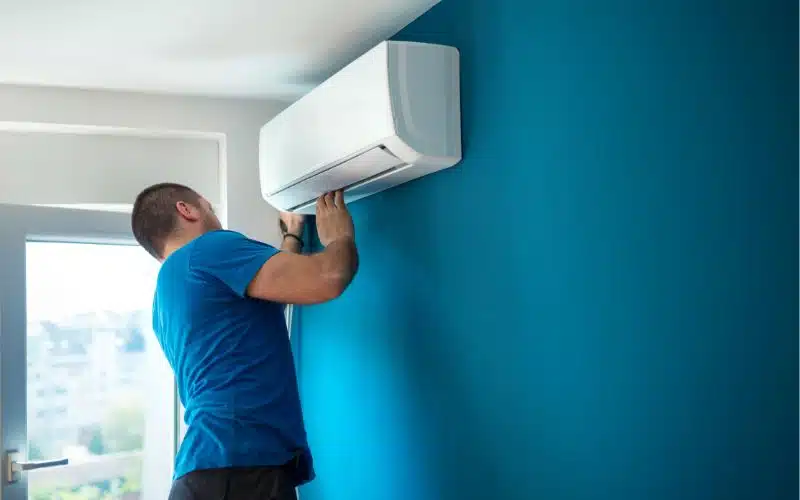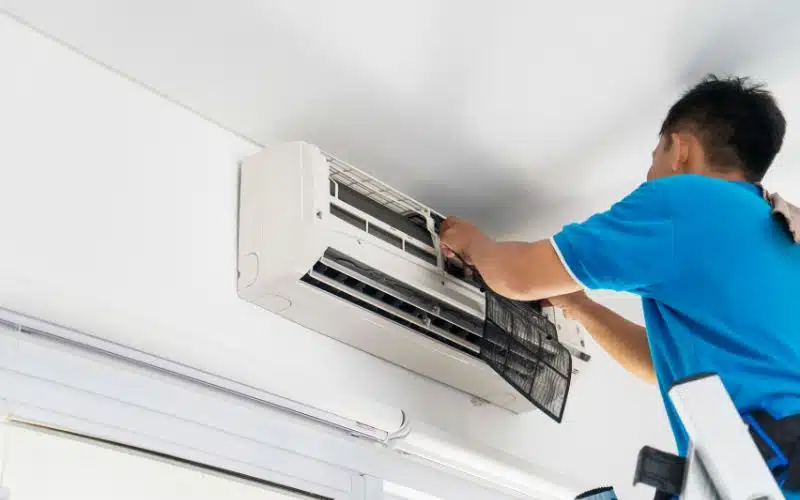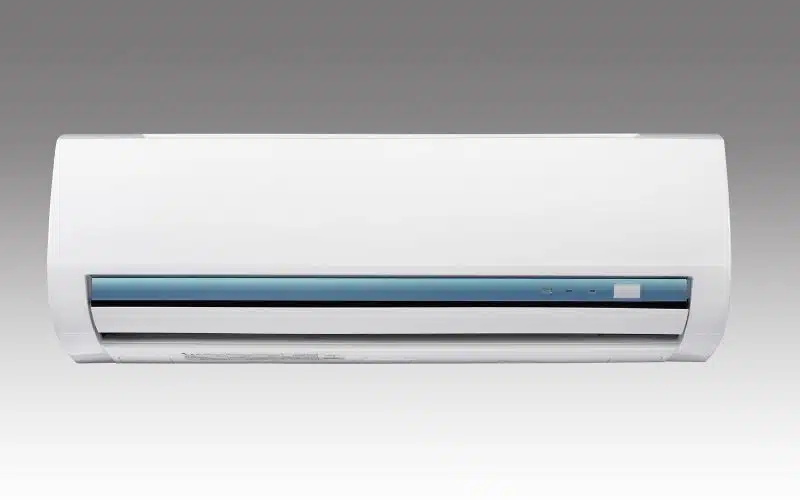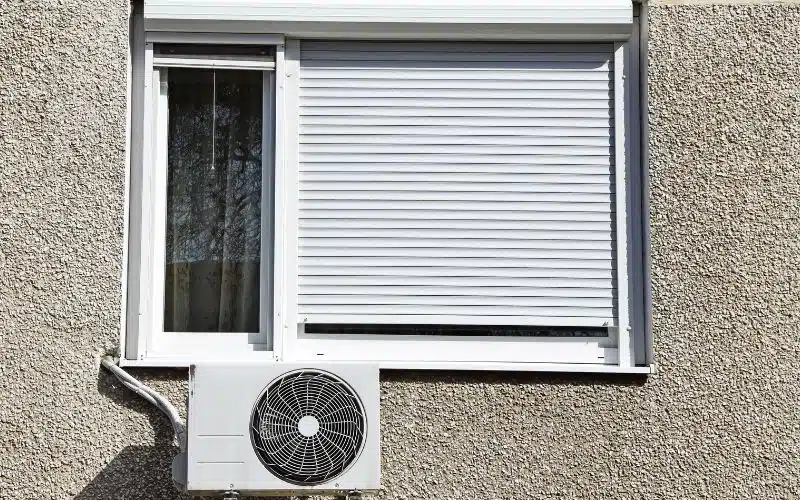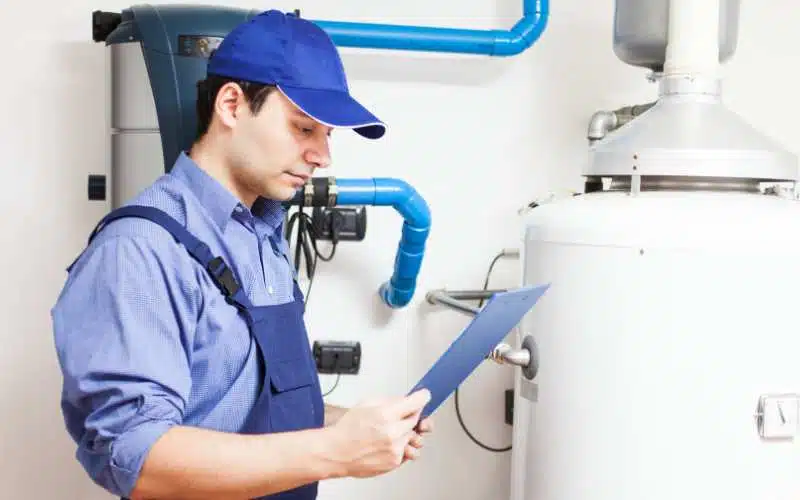A critical component of your home’s HVAC system that we often overlook is the duct system.
Installing your air conditioner is a sure way to ensure it functions properly. It would be best to have enough return and supply ducts in the air conditioner.
Oversized ducts can make your HVAC system overwork itself. Stretching your HVAC system beyond its limits can make it prone to damage.
Undersized ducts lead to pressure in the system, and this pressure causes a breakdown.
The return duct size for a four-ton unit is 24 by 24 inches. You can get this answer by multiplying four by the number of square inches, which is 144. The answer is 576. Find the square root of 576. Due to this, the return duct size for a four-ton unit is 24 by 24 inches.
What Size Return Duct Does a 4-Ton Unit Need?
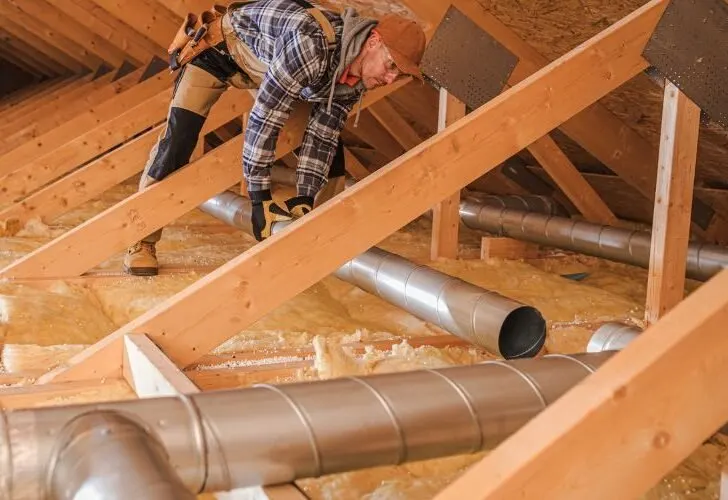
Duct sizing is essential because it is responsible for air circulation to all the rooms in your home.
Calculating the size return duct involves knowing the square footage of the whole house and the systems CFM.
Measure the footage of all the rooms in your home. This measurement can be complicated and, as such, leave it to an expert.
The cubic feet per minute(CFM) is another factor affecting your return duct’s sizing. CFM is the velocity of air that you need to cool or heat every room in your home.
The floor of air also depends mainly on the rate of friction. Experts can check this friction rate and determine the length of the ductwork.
When installing your return duct, there should be 0.05 inches per 100 feet of airflow. That means the amount of air from all returns should be 250 CFM/ton.
To know the size of the return air duct for your four-ton unit, use this formula:
For a rectangular duct, multiply the size of the AC by 144 square inches, 4×144=576. The square root of 576 is 24, so the size of a rectangular return duct.
For a round duct, you will need the CFM rating, which is 400 per ton. Multiply 4×400. Usmoong the duct chart, it is 16 inches.
How do Big Do Return Air Ducts need to Be?
Heating, ventilating, and air conditioning system uses ducts to circulate air in your home.
Return air ducts take back air into the heating or cooling systems. They are an essential component of an HVAC system and maintain air pressure and filter debris.
Return ducts maintain pressure by pumping conditioned air into the system and giving it enough room to escape.
If there is not enough room for escape, the pressure will build up, causing you to be uncomfortable. Filtering debris is another way ducts maintain air quality.
The size of the air duct is dependent on the size of the room and the room’s heating and cooling requirements.
A duct that is too small will make the system force air out. It can lead to problems like high electricity bills, system malfunction, and strange noises.
A too big duct will cause pressure loss and low performance. Without return ducts, air will not flow, leading to increased energy bills and system malfunction.
The return duct should be 0.05 inches/100 feet. If the ducts are too large, the system will push air into the ducts.
As a result, you will experience improper airflow and uncomfortable temperatures in your home.
The ducts will hold more than enough air, and the system will work extremely hard to push out the air until newly cooled or heated air enters the room.
Ensure there is a balanced hair flow. Maintain good pressure throughout the house so the HVAC system will work efficiently.
How Many Returns Does a 4 Ton AC Unit Need?
Ideally, there should be more than one duct in your home. Homes with just one return duct encounter issues like insufficient air.
Install the ducts opposite the supply ducts to enable air to circulate correctly. The system can bring in air from any source if there is insufficient airflow.
This source can be a leakage in the ductwork. If your home does not have enough return ducts, consider adding more to ensure the proper flow of air.
Having several returns makes room for consistent pressure. The number of returns is dependent on the size of the house. You cannot have too many returns.
Ensure there are more than two return ducts in your home to free flow/circulation of air around your home.
Consult an HVAC technician if you do not have sufficient returns. Also, make sure you clean your filters regularly. Clogged filters restrict airflow and cause poor performance.
What Happens If Ductwork Is Undersized?
HVAC systems transport a certain amount of air, and the ductwork enables the system to work correctly.
If the ductwork is undersized, there will be a higher static pressure. Static pressure is the resistance to airflow in a heating and cooling system and ductwork.
If the resistance to airflow is high, the system will work harder to expel air through the ductwork.
Undersized ducts cause a restriction in airflow and noises like whistling. The duct will not disturb air evenly.
A few things you will experience are:
#1. Strange Noises
Due to the high pressure, there may be leaks, and air can escape through the open spots. This leakage is the reason for the whistling or popping sounds you hear whenever you turn your system on.
#2. Improper Flow Of Air
Undersized ducts can be the reason why you experience fluctuating room temperatures. High static pressure reduces the airflow and makes you uncomfortable.
#3. High Utility Costs
If you don’t size your duct correctly, it will decrease the performance of your system and increase energy bills.
#4. Equipment/System Failures
Your blower motor or compressor can become faulty due to static pressure. This fault develops because the compressor pumps high pressure.
If there is little return air, the system will pump liquid back to the compressor when it should not. In extreme cases, these repairs are expensive, and you may have to replace the entire system.
The only way to resolve these issues is a replacement. Make sure you contact an HVAC technician to replace your undersized ducts.
How Many CFM Do I Need For a 4-Ton AC?
CFM is cubic feet per minute. It tells the amount of air an air conditioner carries per minute. To ensure proper cooling, get a unit with a high CFM rating.
Your AC unit does two things to cool your home effectively, and they are: removing heat and removing humidity.
If the AC moves enough air but cannot remove heat, your house will not be cool enough. When choosing the appropriate CFM, there are some factors you should take into consideration.
#1. Humidity In Your Home
If you live in a place with high humidity, you can get an AC unit with 450 CFMs per ton. If your home does not lose heat quickly, you can get a 350 CFM ton unit.
In humid areas, the AC unit works very hard to expel moisture from the air. Therefore, it will not move much air to cool your home correctly.
#2. Climate Of Your Surroundings
You will need more CFM in dry climates because dry air is difficult to cool.
#3. Size Of Your Home
You will need more CFMs for proper cooling if your home is significant. Conversely, if your home is small, you will need less CFM.
For a 4-ton AC, you will need 1600 CFMs. Not having enough CFMs causes poor cooling, breakdowns, high utility costs, and stuffy rooms.
Contrarily, you need the right amount of CFM for better comfort. Therefore, I will advise you to talk to an HVAC technician so that they can assess your home and make suitable recommendations for you.
The table below shows the size and CFMs in different climates.
| Tonnage | CFM (Humid Climate) | CFM (Moderate Climate) | CFM (Dry Climate) |
|---|---|---|---|
| 1.5 tons | 450 | 600 | 750 |
| 2 tons | 600 | 800 | 1000 |
| 2.5 tons | 750 | 1000 | 1250 |
| 3 tons | 900 | 1200 | 1500 |
| 4 tons | 1200 | 1600 | 2000 |
| 4.5 tons | 1350 | 1800 | 2250 |
| 5 tons | 1500 | 2000 | 2500 |
| 5.5 tons | 1650 | 2200 | 2750 |
| 6 tons | 1800 | 2400 | 3000 |
Conclusion
An undersized duct will restrict airflow and prevent your system from running efficiently. In addition, if the ducts are too small, the pressure in the system increases.
Large ducts, on the other hand, will take in more airflow and stretch the system beyond its limits. Therefore, you should know the appropriate size duct for your AC unit.
